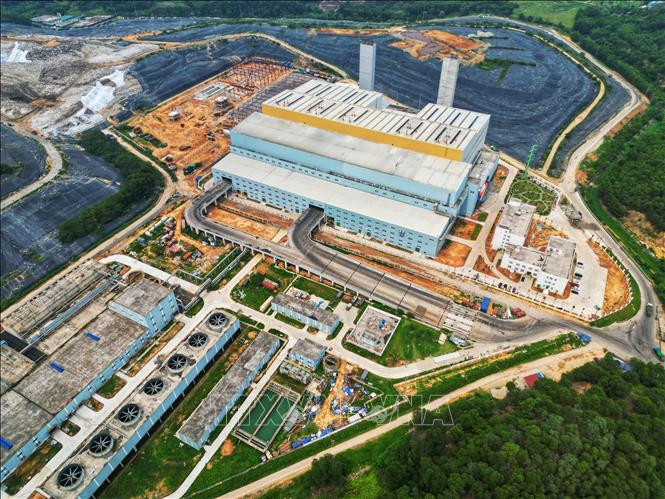Company news
Localities want more waste-to-electricity projects
Localities want more waste-to-electricity projects
In its statement to the government on the eighth national power development plan (Plan 8), MOIT proposed total capacity of 1,212 MW for waste-to-electricity production by 2030, including 493 MW in the north, 122 MW in the northern of the central region, 60MW in the central part of the central region and 448 MW in the south.
The capacity, according to environmental experts, is small compared with the demand and real capability of waste-to-electricity projects in Vietnam.
Many cities and provinces in Vietnam are inviting bids for waste-to-electricity projects, including Hanoi, HCM City, Can Tho, Phu Tho, Hue, Da Nang and Khanh Hoa.
Meanwhile, the total capacity projected by MOIT in the draft decision on promulgating the national plan on power development is too small, and only accounts for a small proportion of the total electricity output.
Can Tho, for example, has very small ‘quota’ of 15 MW of waste-to-electricity output. The figures are 10 MW in Tra Vinh and 15 MW in Da Nang.
The waste treatment method that Vietnam has chosen to follow is incinerating waste to generate electricity, because other methods do not succeed and leave serious pollution consequences.
Local authorities don’t want more landfills amid protests from local people. The waste incineration using outdated technology, which has been applied for a long time, ca no longer be used.
About 90-100 percent of incinerators are not operating, or operating ineffectively, thus causing gas and waste pollution, smoke, insects and bad odors, according to an expert.
The composting technology also doesn’t bring the desired effects, because unlike other countries, waste in Vietnam is not classified which makes it difficult to make composted fertilizer or bury waste.
“Because of these reasons, waste-to-electricity is the optimal technology for Vietnam,” he concluded.
Hoang Duong Tung, a respected environment expert, said there are only a few waste treatment technologies. In recent years, many localities have developed small-capacity incinerators. There are about 300-400 such incinerators with the investment rate of VND2-4 billion for each. There are also incinerators developed at below VND1 billion, made in Vietnam. The incinerators cannot meet the requirements on emissions.
Waste-to-electricity technology needs encouragement
The projects on burning waste to generate electricity are not normal commercial electricity generation projects. The major purpose is treating waste, and electricity is generated during the process.
Treating domestic waste is an urgent issue in all cities and provinces and it affects social security. The government, ministries and branches need to support localities in implementing the projects to mitigate pollution and help cut budgets for waste treatment.
Tung said this is a good solution which has been applied in many countries. The countries pay special attention to treating dioxin and furan. The incinerators of this kind are suited to localities with the daily waste volume of several hundreds of tons.
Experts said the waste-to-electricity technology has great advantages. This is the most advanced technology, which saves cost for waste treatment, and generates power from the incineration. The technology is applied in all developed countries.
The localities such as Da Nang, Khanh Hoa and some other cities/provinces have a waste volume of 1,800 tons per day by 2030, or 75 tons per hour, which means an electricity output of 40MW for the national grid.
So, the total capacity of all waste-to-electricity plants throughout the country is just 2,000 MW, insignificant compared with coal-fired and gas-fired power, wind and solar power, as well as other types of power.
The leader of a provincial industry and trade department said prioritizing the development of waste-to-electricity projects means prioritizing the environment treatment (domestic waste).
More importantly, the plants are located at the center of cities/provinces, near electricity consumption places, so the electricity production and transmission costs will be low.
Particularly, the income from the electricity generation will help reduce costs and budget for waste treatment and environmental protection.
According to the provincial leader, a locality with waste volume of over 1,000 tons per day should be given a quota of developing waste-to-electricity capacity of 30-40 MW.
News Source:https://vietnamnet.vn/en/localities-want-more-waste-to-electricity-projects-2209927.html
Categories
Latest News
Contact Us
Contact Us To Have Your Registration Paper
Tel: +86 21 6104 7706
Cell: +86 153 0180 5979
Email: info@inbcglobal.com
Our account manager will serve your side to help you secure the seat.
Or you can do the online
pre-registration here!

 weboss
weboss wingjslm
wingjslm
 weboss
weboss